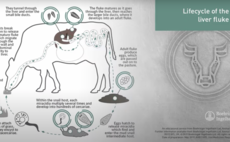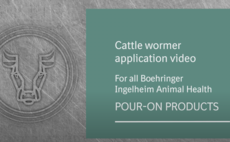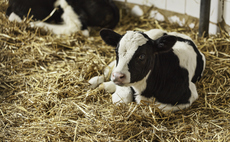Campaigns
Farm24
24 Hours in Farming has won the Commercial Partnership of the Year at the prestigious 2023 PPA Awards
Beat the Parasites
Lifecycle of the gutworm Both Ostertagia and Cooperia have a direct life cycle, with no intermediate host. Adult worms living in the gut lay eggs which are passed out in the dung. Eggs hatch within the dungpat and develop into infective larvae. Larvae can exist for several months on pasture, ready to infect grazing animals. Once eaten, infective Cooperia larvae develop into adults within three weeks.
Beat the Parasites
Lifecycle of the lungworm Adult lungworm live in the main airways; the bronchi and trachea. They produce eggs that hatch almost immediately, are coughed up and swallowed. L1 larvae pass through the digestive system and leave the cow via dung. It is here that they develop to the infective stage. This development can occur within a week given the right moisture and temperature conditions.
Beat the Parasites
The adult stage of the liver fluke lives in the liver of infected animals, specifically in the bile ducts. Adult fluke lay eggs which are passed along the bile ducts and into the intestine, where they are excreted in dung. Once outside the animal, eggs can survive for several months, but usually hatch within 2–20 weeks depending on soil type and ambient temperature.
Beat the Parasites
Meet Natasha Moore and her family who farm a 230 pedigree/beef herd in the UK. They have 3 grazing groups and 2 Limousin bulls and a British Blonde bull. Natasha and her team see how important it is to be proactive when it comes to worming after a recent parasite problem. Natasha sits down with their vet at the beginning of the year to work out a worming control plan.
Beat the Parasites
Sheep wormer application tutorial video for all Boehringer Ingelheim Animal Health ORAL DRENCH Products.
Beat the Parasites
Cattle wormer application tutorial video for all Boehringer Ingelheim Animal Health POUR-ON Products.
Beat the Parasites
Cattle wormer application tutorial video for all Boehringer Ingelheim Animal Health INJECTION Products.
Metacam
�������� in the UK adhere to some of the highest standards of animal husbandry and care in the world, whether that is part of a farm assurance scheme or herd health plan developed with their vet.

 29 June 2023
•
1 min read
29 June 2023
•
1 min read









